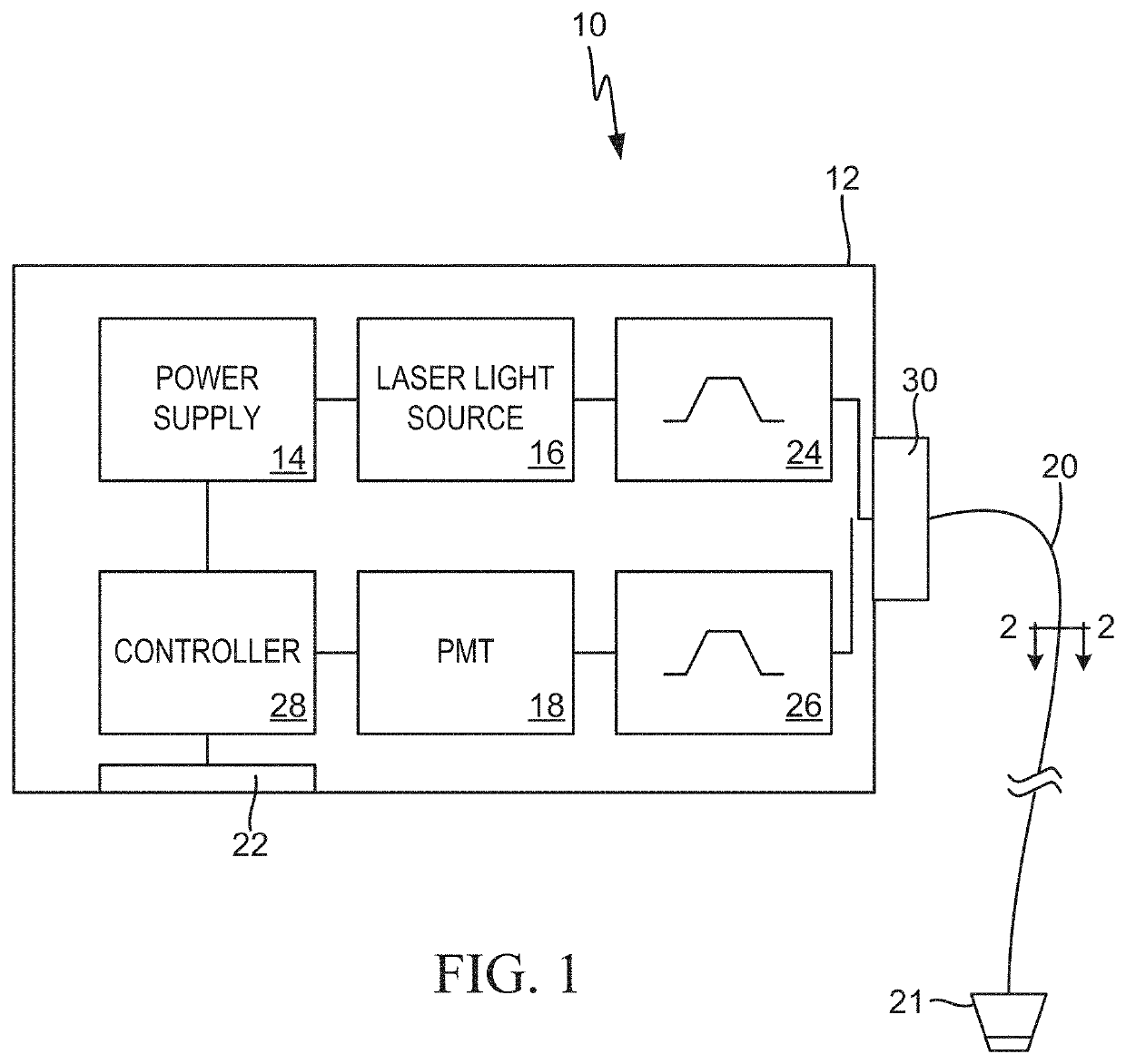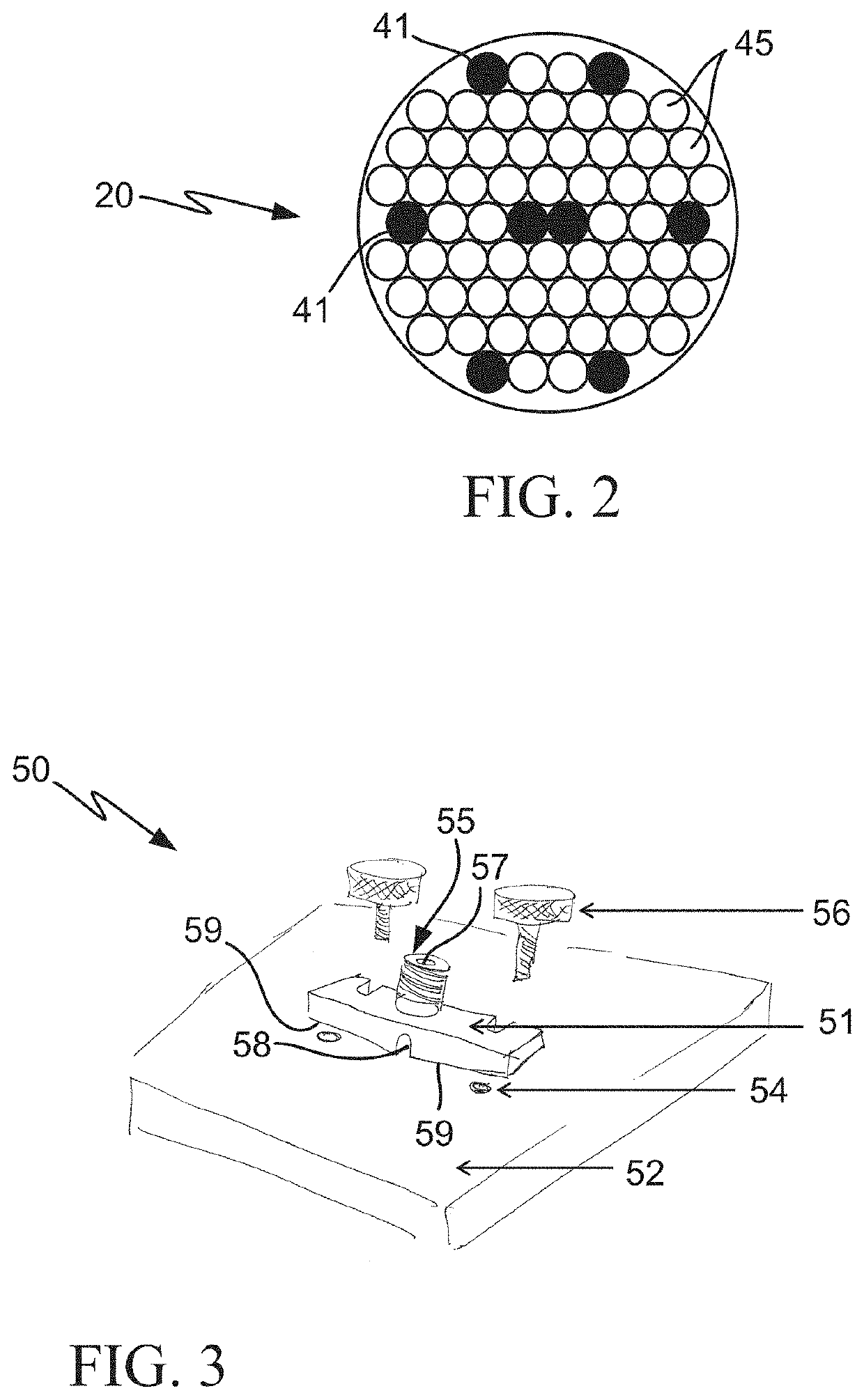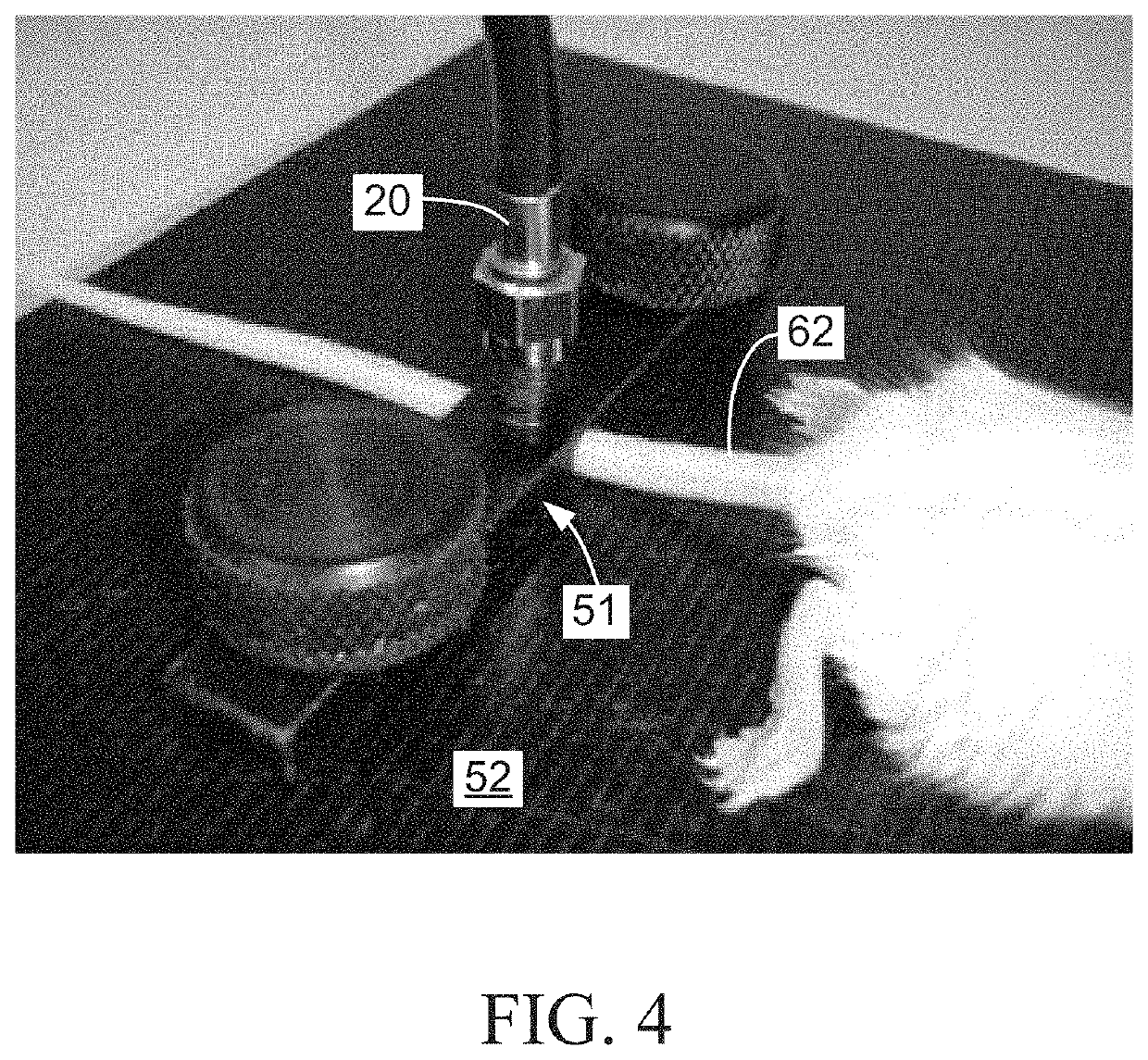Multimodal systems and methods for detecting and quantitating cell or other particle targets in a bloodstream of a living being
- Summary
- Abstract
- Description
- Claims
- Application Information
AI Technical Summary
Benefits of technology
Problems solved by technology
Method used
Image
Examples
experimental / examples
EXPERIMENTAL / EXAMPLES
[0030]The following examples describe practical applications of the present invention in humans, laboratory animals and other research models. However, practical applications of the present invention are not limited to the examples described herein. It should be noted that various changes and modifications to the embodiments described herein will be apparent to those skilled in the art. Such changes and modifications may be made without departing from the spirit and scope of the present invention and without diminishing its attendant advantages. For example, various embodiments of the systems and methods may be provided based on various combinations of the features and functions from the subject matter provided herein.
example 1
In Vivo Detection and Quantitation of Circulating Tumor Cells (CTCs)
[0031]In neoplastic disease, malignant cells often express unique biomarkers not found on normal (non-malignant) cells, or that are present at levels that are significantly different than those found on normal cells. The present invention exploits this principle by providing a means by which to detect and quantitate cancerous cells circulating in the bloodstream, so called circulating tumor cells (CTCs).
[0032]For human clinical applications, a diagnostic reagent including a fluorescent dye conjugated to an antibody or other ligand which specifically binds to a unique cancer biomarker is intravenously (IV) injected into a cancer patient. The fluorescent conjugate could also be comprised of fluorescent microspheres, including magnetic or non-magnetic material derivatized with an antibody or other ligand. Once in circulation, the fluorescent conjugate would then bind to, and label, the CTCs in the patient's bloodstream...
example 2
In Vivo Detection and Quantitation of Metastatic CTCs
[0034]In a research application, tumor cells expressing a unique a cancer biomarker can be injected into a tissue site in the subject other than the blood to establish a focal tumor graft. The ability of the cells of the resulting tumor to extravasate into the bloodstream as CTCs can then be determined, over time, by detection and quantitation of the resulting CTCs using the system and methods of the present invention as described in example 1 above. In this example, use of the system and methods of the invention provides a convenient, in vivo, minimally invasive model for metastatic cancer in a laboratory animal.
PUM
 Login to View More
Login to View More Abstract
Description
Claims
Application Information
 Login to View More
Login to View More - R&D
- Intellectual Property
- Life Sciences
- Materials
- Tech Scout
- Unparalleled Data Quality
- Higher Quality Content
- 60% Fewer Hallucinations
Browse by: Latest US Patents, China's latest patents, Technical Efficacy Thesaurus, Application Domain, Technology Topic, Popular Technical Reports.
© 2025 PatSnap. All rights reserved.Legal|Privacy policy|Modern Slavery Act Transparency Statement|Sitemap|About US| Contact US: help@patsnap.com



